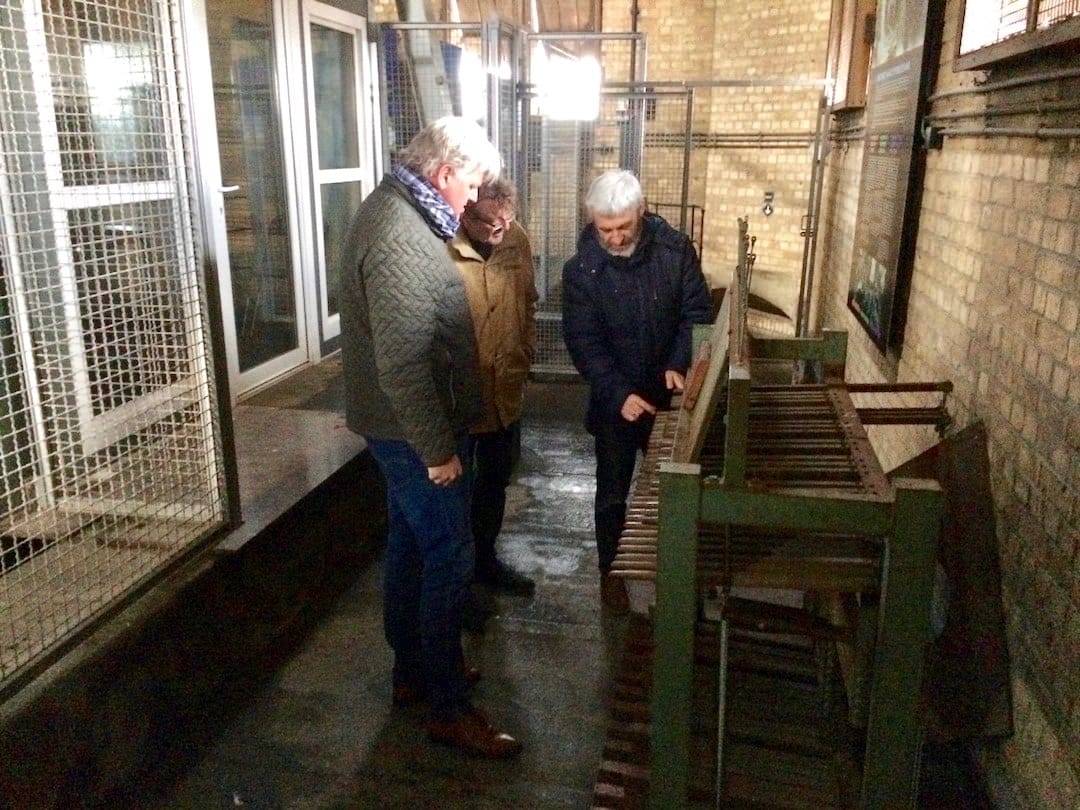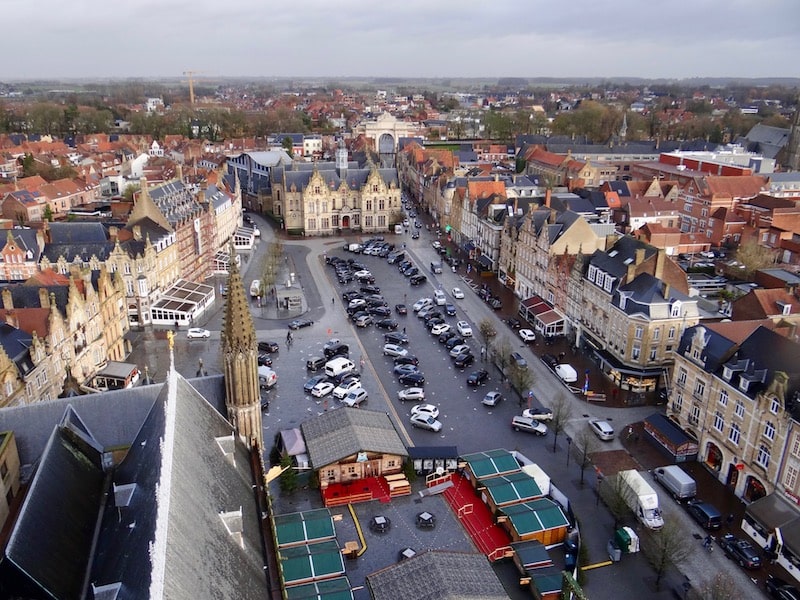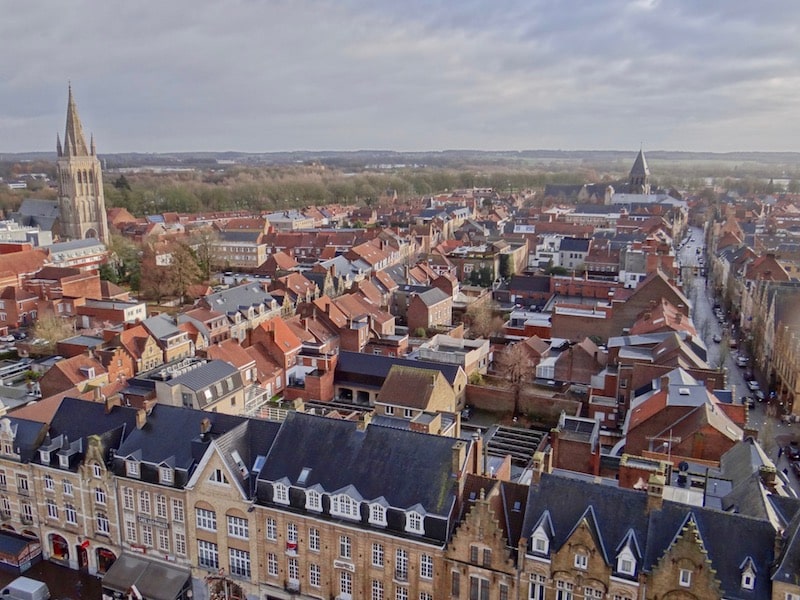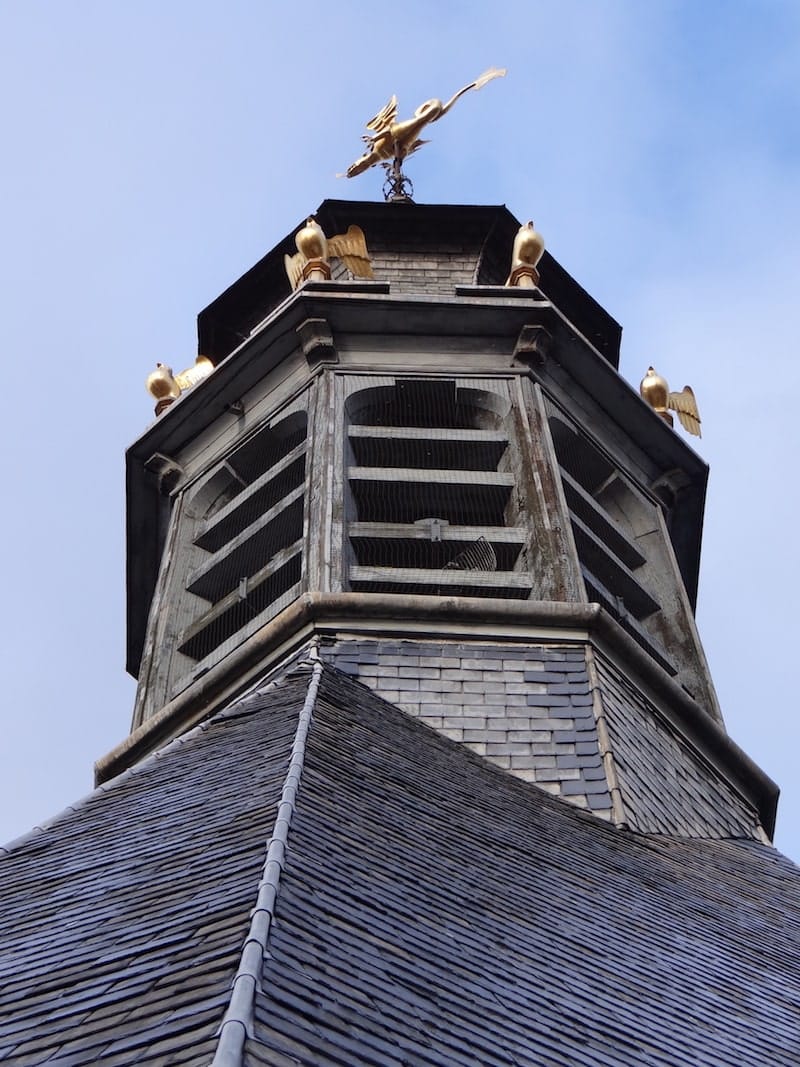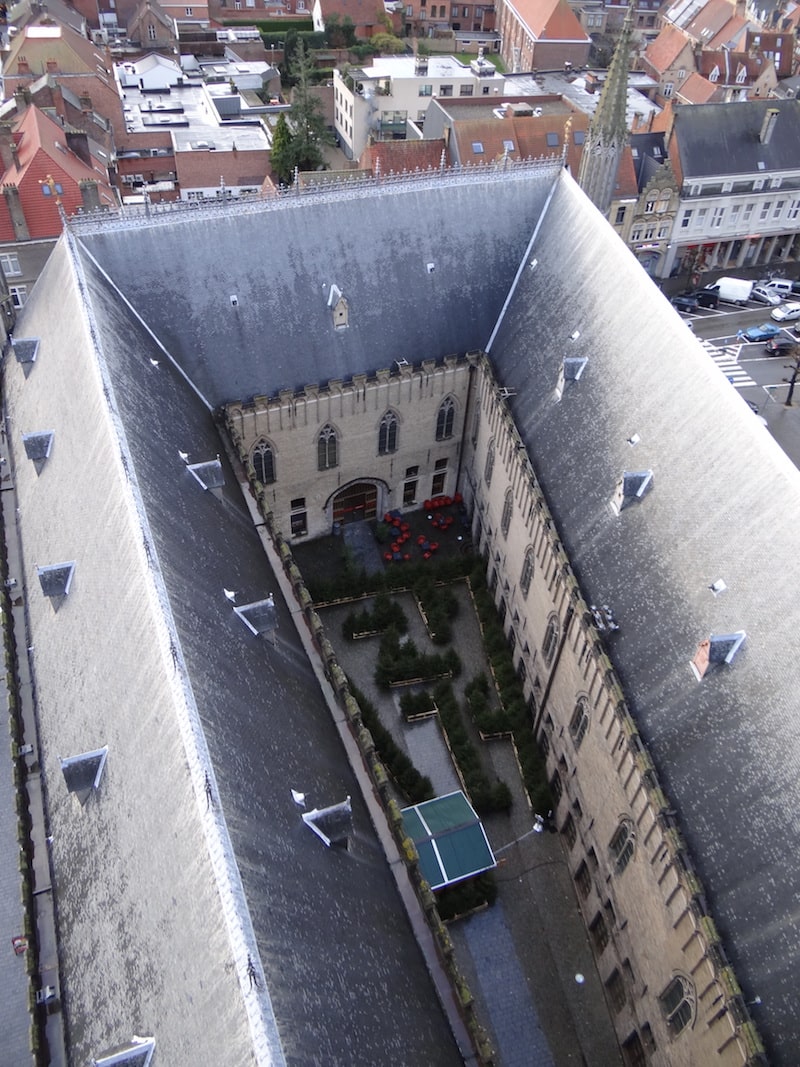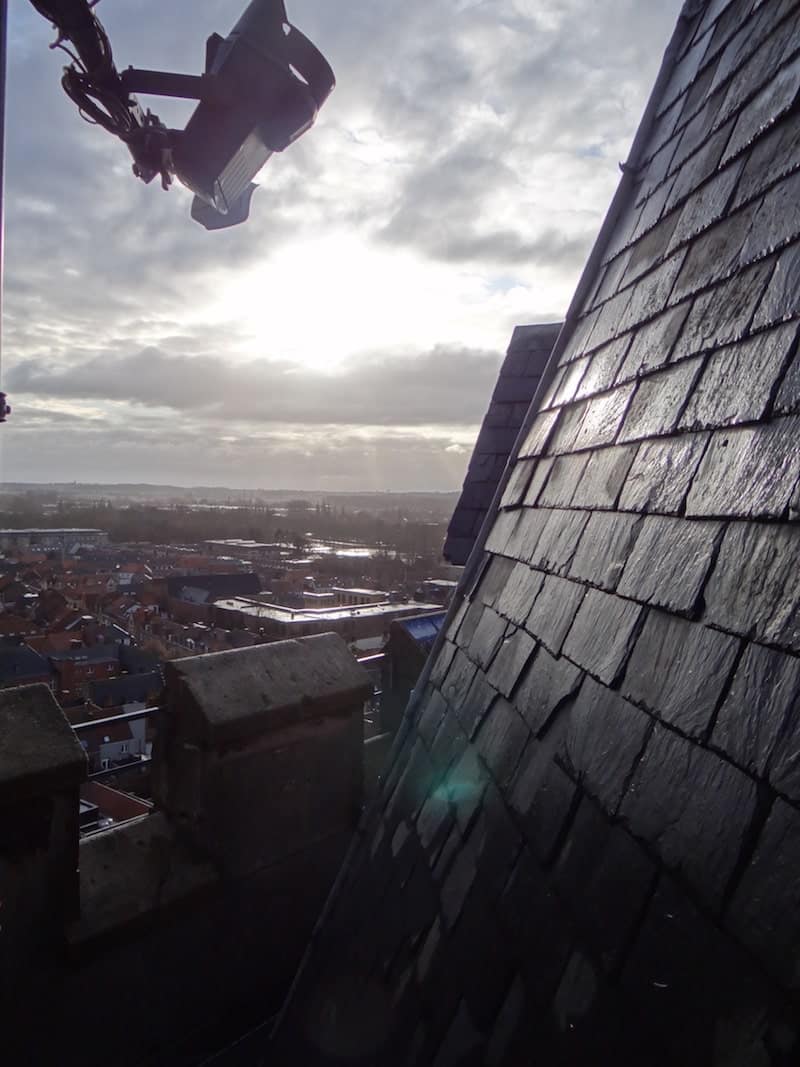Ludo Geloen, composer and carillonneur
An appointment at the fountain
We leave on time! Previous visits had taught us that plenty can happen along the way, so we had better try to be there well in advance. Unfortunately, everything is pretty much against us on the way to Ypres. The weather is bad, the road is crowded and the phone with the number of our appointment is empty at the moment suprême. At 12:30 we would hear Mr. Ludo Geloen, carillonneur of the cities of Ypres and Poperinge, composer and improviser. Fortunately, through the Ypres tourism service, we are able to notify him that we are half an hour late.
Interview on camera
Before entering the belfry, we have a cup of coffee with Ludo Geloen at Hotel Regina right across the street. This time, for the first time, we want to ask our questions in front of the camera’s eye. Mr. Geloen has no objection to this, and through theIn Flanders Fieldsmuseum he pilots us inside. Somewhat uneasily, we begin the recording and (afterwards) to our luck, Bert is also filming the interview with his smartphone because as it turns out, the video camera is set to shoot! So instead of an image capture, we have three nice photos of Eric with Ludo Geloen. Below, therefore, is the transcribed version of the interview.

About the Ypres Carillon
Today 49 bells is the standard for a carillon, but in 1936 we first had a carillon here in Ypres with 36 bells. Like the carillon of Diksmuide now, which is also 36 bells. In 1963, the carillon came down from the campanile (bell tower ed.), was checked and expanded to 49 bells. Four of the original bells were replaced in the process because they could no longer be properly tuned. These are now behind the keyboard.
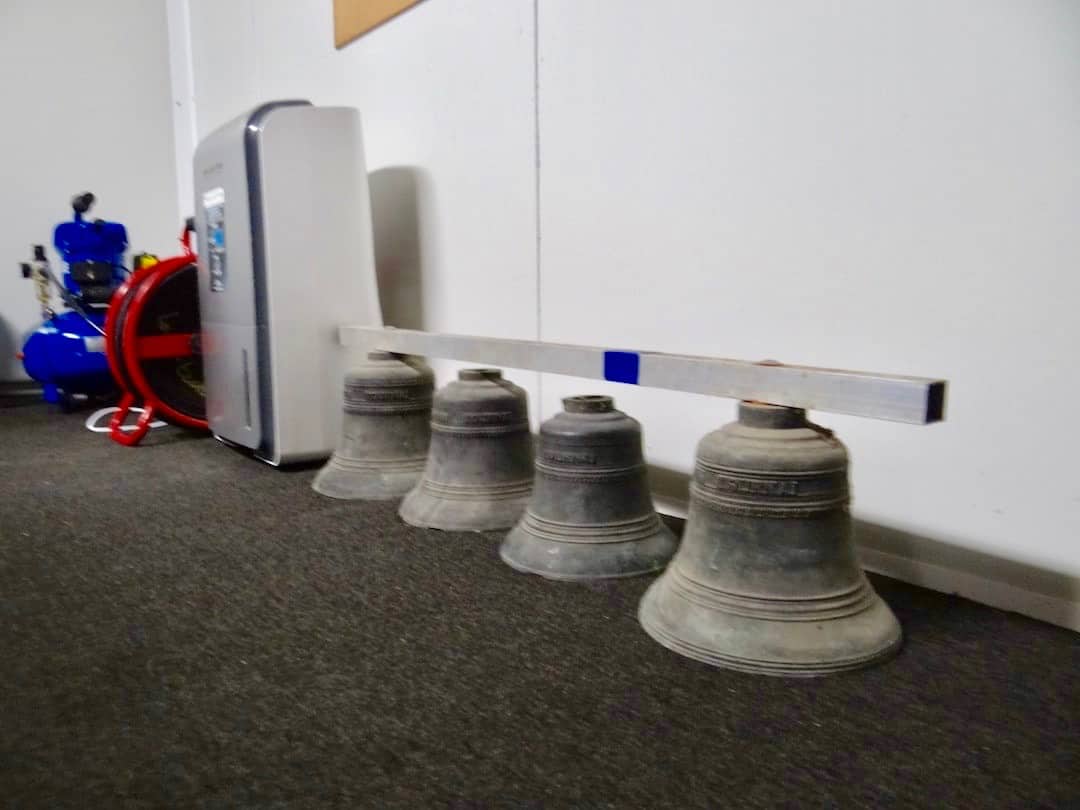

What is the relationship between city rights with privileges and bells?
In the 13th and 14th centuries, city governments were allowed to assign their own value or meaning to bells. The town was allowed to say, “we start work at eight o’clock and we stop at seven o’clock and to indicate that, the following bells are rung in the process. There also hung a clock for indicating danger: approaching troops or fire. If you rang it at the wrong time you lost your head.
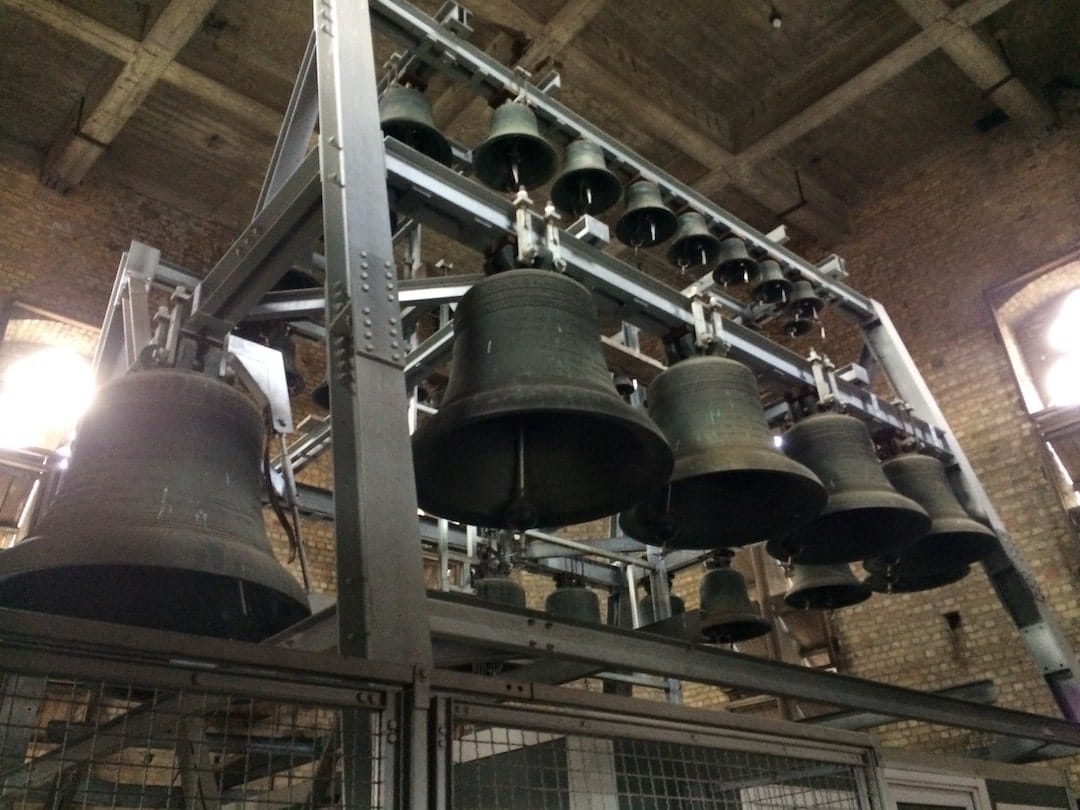
How did training as a carillonneur end up in Mechelen?
The training in Mechelen was started by Jef Denyn. Jef succeeded his slowly blind father Adolphe Denyn in 1887. He felt that the country’s carillonneurs were too amateurish and that there should be a school. In 1921 under the auspices of the then Queen Elizabeth, the school started. Actually separate from all institutions, the school has always remained on its own, and ten years ago the school became part-time art education (DKO).
Like Adolphe Denyn, Noël Reynders passed on the trade to his sons, did Ludo also succeed his father?
No, I have no one before me and there will be no one after me. I have three children but they are not musical. I myself just started as a youngster in my village (Dikkebus) five kilometers away from here as a trumpet player. Then I started on the organ because the pastor was looking for an organist. Then I thought, ‘I’m going to do that and taught myself a little bit.’
Started training by the Messines carillon
There used to be a carillon in Messines Abbey. This was shot to pieces in World War I. Albert Ghekiere of Mesen took the initiative in the 1980s to restore the Mesen carillon and expand it to 56 bells. It is there that I first heard the bell sound as an instrument. Then I thought, ‘ I’ll just go to Ypres and see what’s happening there and here at the time was an 84-year-old carillonneur who couldn’t get up the stairs anymore and so there was an open seat. I started my carillon studies in Roeselare and completed them in Mechelen. In 1996 I became the carillonneur of Ypres. So now I have been carillonneur here for 23 years.
Are all carillonneurs male and have beards?
Ludo laughs. No, some are women and they don’t have beards! Jef Denyn’s successor as headmaster of the school in Mechelen was Staf Nees. This one had a black wide-brimmed hat, a beard and he smoked pipe. All the graduates at that time looked exactly like that because they thought that’s how a carillonneur was supposed to be dressed. Incidentally, he was also opposed to women as carillonneurs. Piet van den Broek who succeeded him again did allow women to join and now there are many ladies playing the carillon.
Are we standing next to the Mozart of the carillon?
I do compose a lot but Mozart is way out of my league! Started young and the fun part about carillon compositions is that we arrange and exchange with other composers. I don’t buy carillon music, I give something and get something back. There is a website for this (Salvator). This is arranged from the school and you can post music on it and download from it. By the way, I like to compose for all instruments but especially for the carillon. The special thing about carillon compositions is that the overtone of the bell is different from other instruments. This is because most instruments have a major third in the overtone and a bell has a minor third or minor. So you have to know very well how to compose for a carillon.
In fact, when was the first piece composed for a carillon?
The first score written is the 1746 carillon book by Johannes De Gruyters (1740-1771) of Antwerp but that is still in the baroque era. Beautiful pieces by Matthias van de Gheyn followed shortly thereafter. He came from a family of bell founders. From him, 15 works have survived. Its eleven preludes earned him the nickname “Bach of the Carillon.
Is composing for the carillon substantially different from other instruments?
When composing, you need to take into account that the carillon is played with fists and if you stroke two keys side by side at the same time, a metallic sound is created. On an organ you normally play chords but on a carillon you play broken chords in time. All bells have overtones, provided they are properly tuned. You can tune a bell by turning it over and then milling away material on the inside in certain places. A bell is cast thicker so that material can be removed on the inside for the purpose of tuning.
When did the clock first see the light of day?
When the first bell was cast I would not know. That might have been in China or Persia. What I do know is that when a bell is removed from the mortar, the bell is dipped. Bells have a head, a shoulder and a lip. Clocks simply have human content. A carillon in itself is not baptized; the carillon does not belong to the church but to the city. Bells may be baptized upon commissioning. This can be done by a priest but it is also often the bell-founder himself who christens the bells. In the process, they are all given names. Very special.
Does the carillon sound the same all year?
I myself prefer to hear the carillon when it is freezing because then the tones go much further and much clearer, purer through the air but when it is warm and then I hear the carillon downstairs I always think of the sun again. Not only does the temperature of the air play a role. Heat and cold affect the threads, causing them to expand or contract. Therefore, the voltage on the wires must be adjusted regularly. If the clapper gets too close to the bell it will “stick,” you can hear it immediately.
Up in the Belfry
Bert then asks the very last question, “Is there still enough time to go into the belfry higher up? There may be! Unfortunately not all the way to the ridge, as the spire is the domain of the pigeons and is locked with a good padlock. The view of the surrounding area more than makes up for this.
Back downstairs we thank Mr. Geloen for all the information. He leaves us behind in the museum because he already has to host another group. Barely recovered from the informative and amusing conversation, we then fall from one surprise to another in the museum. But perhaps more on that in another post.
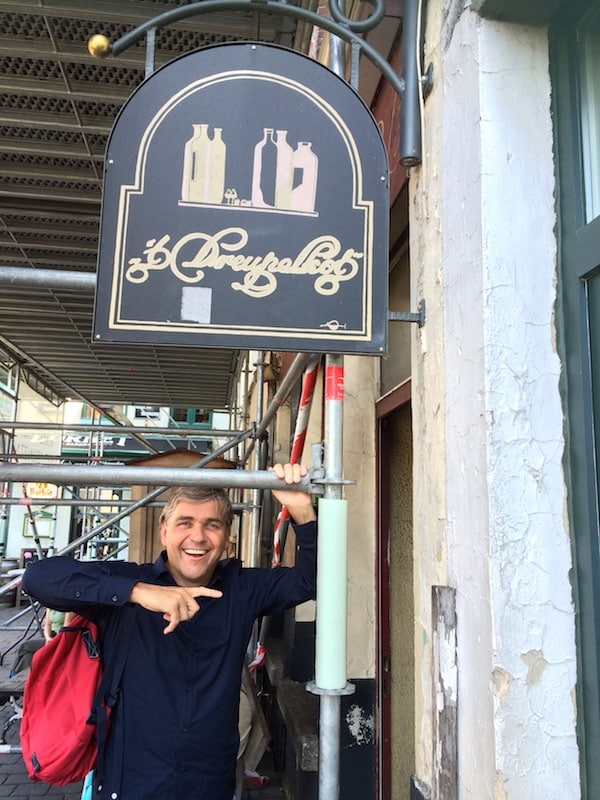
Eric Cornelissen
When it was is no longer known but during an edition of the Ghent Festivities, an interest in the history and meaning of Belforts arose.
With a fat nod to Reinhold Messner who was the first to climb the fourteen highest peaks in the world, someone had to be the first to climb all the belfries of the Low Countries!
Only later did it become clear that there were not 14 but 56.
That Messner had it easy.

